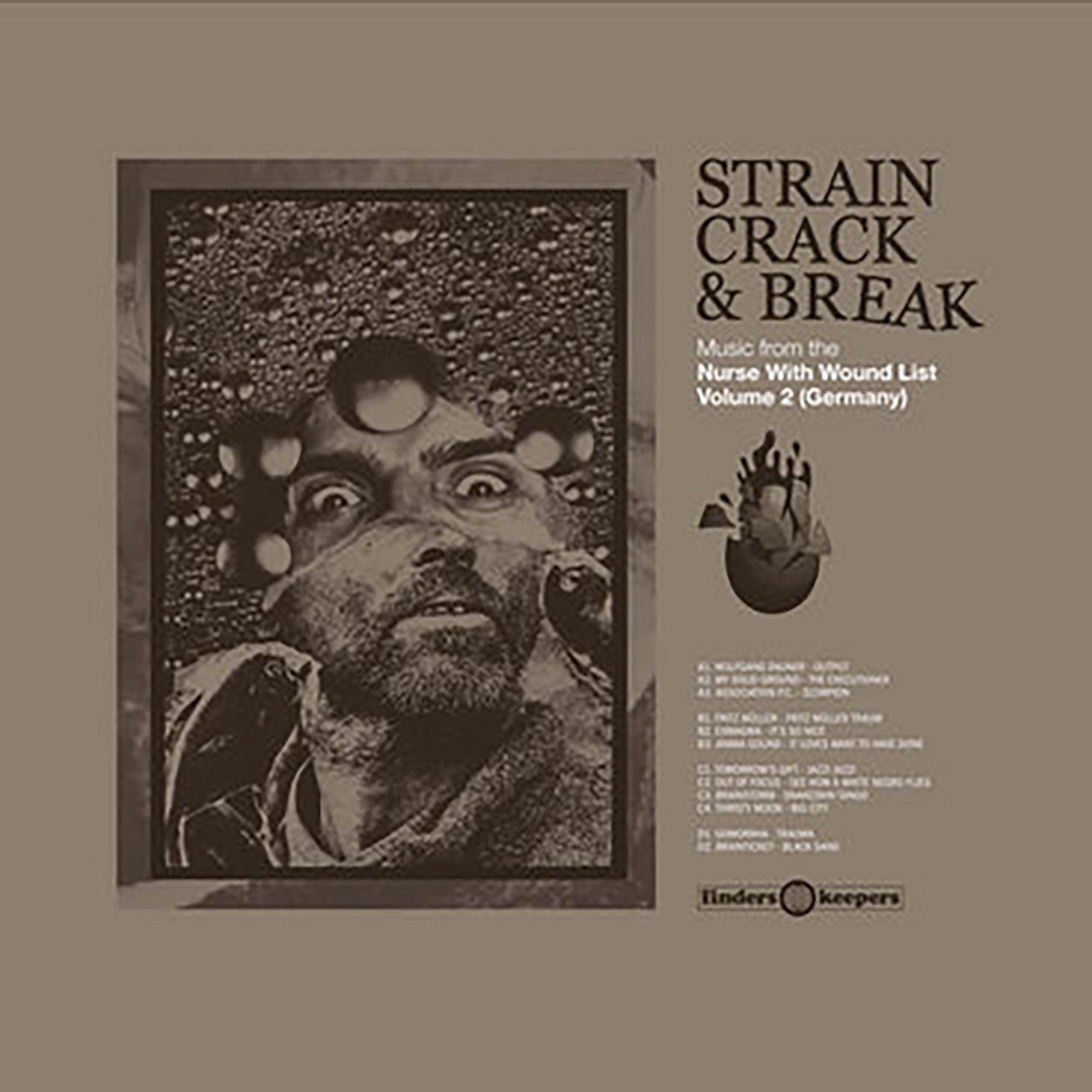 As a longtime Nurse With Wound fan, I have always been a bit amused and perplexed by the almost-religious reverence that people continue to have for Steven Stapleton's famous list. For one, it is hard to process that there was once a teenager in the '70s who was so cool that adults all over the world would spend the next forty years trying to replicate his record collection. Secondly, it seems like any underground bands from that era who have managed to remain obscure until now have probably earned that fate for valid reasons, as there have been plenty of blogs and reissue labels tirelessly unearthing and championing freaky sounds since the advent of the internet. Consequently, when this series was announced, I wondered what could still possibly be left undiscovered. That said, the idea of a Stapleton-curated tour of the most outré and adventurous prog, jazz, and avant-garde artists of the early- and mid-1970s still packs quite an appeal for me, so I am delighted that this better-late-than-never series exists. It admittedly took me a while to warm to the French volume, as I tend to run screaming from proggy indulgence and unfiltered Dada antics and there was plenty of both, but there were definitely some gems as well. Unsurprisingly, this stronger second volume features an even higher proportion of such gems, as it is not a mere coincidence that krautrock had a larger cultural impact than its French counterpart.
As a longtime Nurse With Wound fan, I have always been a bit amused and perplexed by the almost-religious reverence that people continue to have for Steven Stapleton's famous list. For one, it is hard to process that there was once a teenager in the '70s who was so cool that adults all over the world would spend the next forty years trying to replicate his record collection. Secondly, it seems like any underground bands from that era who have managed to remain obscure until now have probably earned that fate for valid reasons, as there have been plenty of blogs and reissue labels tirelessly unearthing and championing freaky sounds since the advent of the internet. Consequently, when this series was announced, I wondered what could still possibly be left undiscovered. That said, the idea of a Stapleton-curated tour of the most outré and adventurous prog, jazz, and avant-garde artists of the early- and mid-1970s still packs quite an appeal for me, so I am delighted that this better-late-than-never series exists. It admittedly took me a while to warm to the French volume, as I tend to run screaming from proggy indulgence and unfiltered Dada antics and there was plenty of both, but there were definitely some gems as well. Unsurprisingly, this stronger second volume features an even higher proportion of such gems, as it is not a mere coincidence that krautrock had a larger cultural impact than its French counterpart.
Much like the first volume, this latest one is packed full of unfamiliar names, which is an impressive feat given how deeply fans have mined '70s German music for killer obscurities. I was, however, vaguely familiar with Wolfgang Dauner and Limpe Fuchs beforehand, probably because they are responsible for some of the album’s most weird and cacophonous moments and that tends to be my wheelhouse. Dauner's piece, for example, sounds like several fusion bands falling down a flight of stairs, while Anima-Sounds' piece captures a (possibly nude) Fuchs wildly free-drumming and yelping along with a sliding and blurting chaos of homemade instruments. It is easy to see how the latter would have blown some goddamn minds at the time, though it does leave something to be desired in the realm of songcraft. The bulk of the album's other luminaries tend to exist in a gray area where jazz, prog, and psychedelia all blur together into unfamiliar new strains. For example, Association P.C.'s "Scorpion" resembles a Miles Davis-less Bitches Brew session, while the feral-sounding Exmagma call to mind Richard Hell or James Chance fronting King Crimson. Elsewhere, My Solid Ground evokes a baffling collision of This Heat and early Coil with the organ bombast of Emerson, Lake, and Palmer. I dearly wish the latter element was absent, but the non-organ passages are right up my alley. That said, the most wonderful surprises are the two lengthy jams that close the album. In Thirsty Moon's "Big City," a very NWW-sounding percussion motif steadily builds into a heavy rolling groove flavored with subtle elements of sound collage that rivals much of Can's stronger work. Gomorrha's "Trauma" is similarly driven by a muscular beat, but instead blossoms into a molten tour de force of spacey psychedelia. Yet another favorite is the hallucinatory marching band mindfuck of erstwhile Neu!/Kraftwerk member Eberhard Kranemann's "Fritz Müller" guise. The rest of the songs make a compelling and varied suite of inspired oddities, but the Gomorrha, Thirsty Moon, and Fritz Müller pieces all felt revelatory enough to trigger an immediate album-hunting binge. While Steven Stapleton has been one of my favorite artists for ages, it is now dawning on me that he is one hell of a great curator as well.
Samples can be found here.


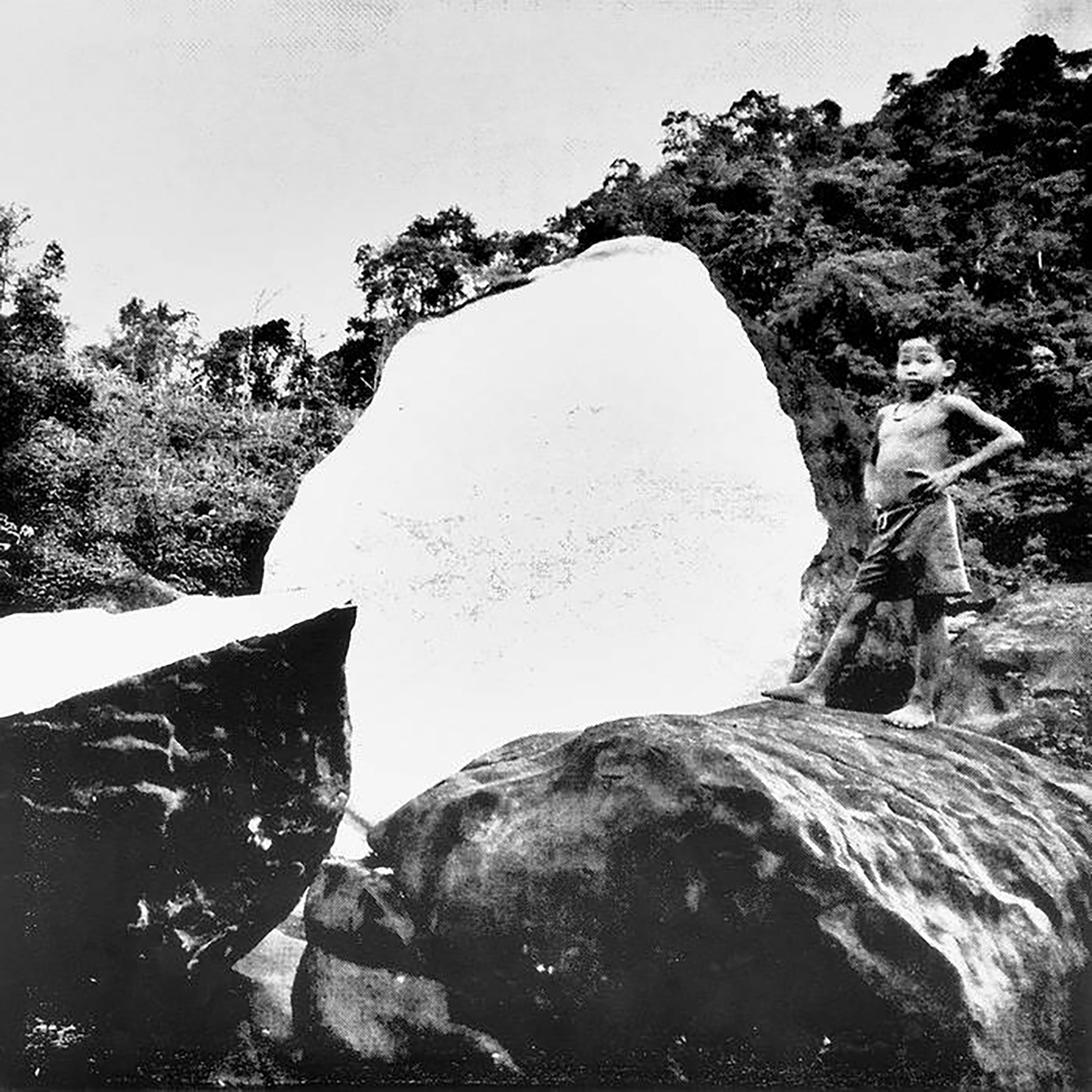 It is quite a daunting task to keep up with Laurent Jeanneau's massive, continually expanding, and oft-challenging discography, but his vinyl releases always tend to be strong and focused statements worth investigating. In that regard, Jeanneau is having quite a great year, as this latest LP is his third excellent album of 2021 (Kink Gong's Zomia Vol. 1 and Sublime Frequencies' Mien (Yao) being the other two). Zomianscape continues Jeanneau's fascination with "Zomia," which is a half-conceptual/half-geographic term for the ethnic minorities in the hills and mountains of Southeast Asia who live outside national laws and customs. The term was first coined by historian Willem van Schendel in 2002, but it was James C. Scott's The Art of Not Being Governed: An Anarchist History of Upland Southeast Asia that particularly struck Jeanneau, as he conceived of the Zomia series as a "mythological soundscape inspired by a semi-utopic region where state rules don't apply." The raw material for these first two longform "Zomianscapes" was recorded over ten years in Cambodia, Laos, Vietnam, and China, but the boundaries between individual cultures, field recordings, and Jeanneau's own contributions are beautifully dissolved into a mesmerizing stew of hallucinatory sound collage. I suppose Zomia Vol. I achieved a similar end in more bite-sized doses, but this follow up offers a deeper, more immersive plunge.
It is quite a daunting task to keep up with Laurent Jeanneau's massive, continually expanding, and oft-challenging discography, but his vinyl releases always tend to be strong and focused statements worth investigating. In that regard, Jeanneau is having quite a great year, as this latest LP is his third excellent album of 2021 (Kink Gong's Zomia Vol. 1 and Sublime Frequencies' Mien (Yao) being the other two). Zomianscape continues Jeanneau's fascination with "Zomia," which is a half-conceptual/half-geographic term for the ethnic minorities in the hills and mountains of Southeast Asia who live outside national laws and customs. The term was first coined by historian Willem van Schendel in 2002, but it was James C. Scott's The Art of Not Being Governed: An Anarchist History of Upland Southeast Asia that particularly struck Jeanneau, as he conceived of the Zomia series as a "mythological soundscape inspired by a semi-utopic region where state rules don't apply." The raw material for these first two longform "Zomianscapes" was recorded over ten years in Cambodia, Laos, Vietnam, and China, but the boundaries between individual cultures, field recordings, and Jeanneau's own contributions are beautifully dissolved into a mesmerizing stew of hallucinatory sound collage. I suppose Zomia Vol. I achieved a similar end in more bite-sized doses, but this follow up offers a deeper, more immersive plunge. I initially slept on this album, as the prosaic title made it sound like a collection of old and orphaned songs rather than a minor sound collage masterpiece. The former would be just fine by me (in a non-urgent way), but the fact that this album is actually the latter completely blindsided me. As the label puts it, Collin pulled "shining diamonds from his discography" and put them "in a new context with more recently recorded segments." In more practical terms, this means that the album beautifully bleeds together ephemeral highlights from Collin's discography into a soulfully mesmerizing, endlessly evolving impressionist fantasia. In its most striking moments, Music From Cassettes, Etc. makes me feel like I am a Dickensian ghost experiencing all the warmest moments from Collin's life through a flickering projector.
I initially slept on this album, as the prosaic title made it sound like a collection of old and orphaned songs rather than a minor sound collage masterpiece. The former would be just fine by me (in a non-urgent way), but the fact that this album is actually the latter completely blindsided me. As the label puts it, Collin pulled "shining diamonds from his discography" and put them "in a new context with more recently recorded segments." In more practical terms, this means that the album beautifully bleeds together ephemeral highlights from Collin's discography into a soulfully mesmerizing, endlessly evolving impressionist fantasia. In its most striking moments, Music From Cassettes, Etc. makes me feel like I am a Dickensian ghost experiencing all the warmest moments from Collin's life through a flickering projector. This latest album from Skelton seems intended to be a major new statement, though not quite a formal follow-up to last year's These Charms May be Sung Over a Wound, as double LPs are a real rarity in the prolific composer's discography. If it was not intended as such, it certainly has the ambitious conceptual framework and focused power of his strongest work. For these four pieces, Skelton used a self-devised divination deck of Proto-Indo-European word roots for inspiration, making the album the fruit of an occult-tinged and antiquarian word game. Skelton also maintained the same restricted palette and duration for each piece, yet the tone varies significantly between them, as he treated each composition as a meditation upon a single, unvoiced question. To some degree, Four Workings is an especially ambient-minded release, as the hypnotically repeating melodic fragments are reminiscent of Celer's most loop-driven fare. The similarities mostly end there, however, as the billowing ambiance is often a smokescreen for a more sharp-edged and sophisticated undercurrent that slowly emerges from the murky depths. This is an unusually strong suite of compositions for Skelton's current phase, and the first piece in particular is probably among his finest moments to date.
This latest album from Skelton seems intended to be a major new statement, though not quite a formal follow-up to last year's These Charms May be Sung Over a Wound, as double LPs are a real rarity in the prolific composer's discography. If it was not intended as such, it certainly has the ambitious conceptual framework and focused power of his strongest work. For these four pieces, Skelton used a self-devised divination deck of Proto-Indo-European word roots for inspiration, making the album the fruit of an occult-tinged and antiquarian word game. Skelton also maintained the same restricted palette and duration for each piece, yet the tone varies significantly between them, as he treated each composition as a meditation upon a single, unvoiced question. To some degree, Four Workings is an especially ambient-minded release, as the hypnotically repeating melodic fragments are reminiscent of Celer's most loop-driven fare. The similarities mostly end there, however, as the billowing ambiance is often a smokescreen for a more sharp-edged and sophisticated undercurrent that slowly emerges from the murky depths. This is an unusually strong suite of compositions for Skelton's current phase, and the first piece in particular is probably among his finest moments to date.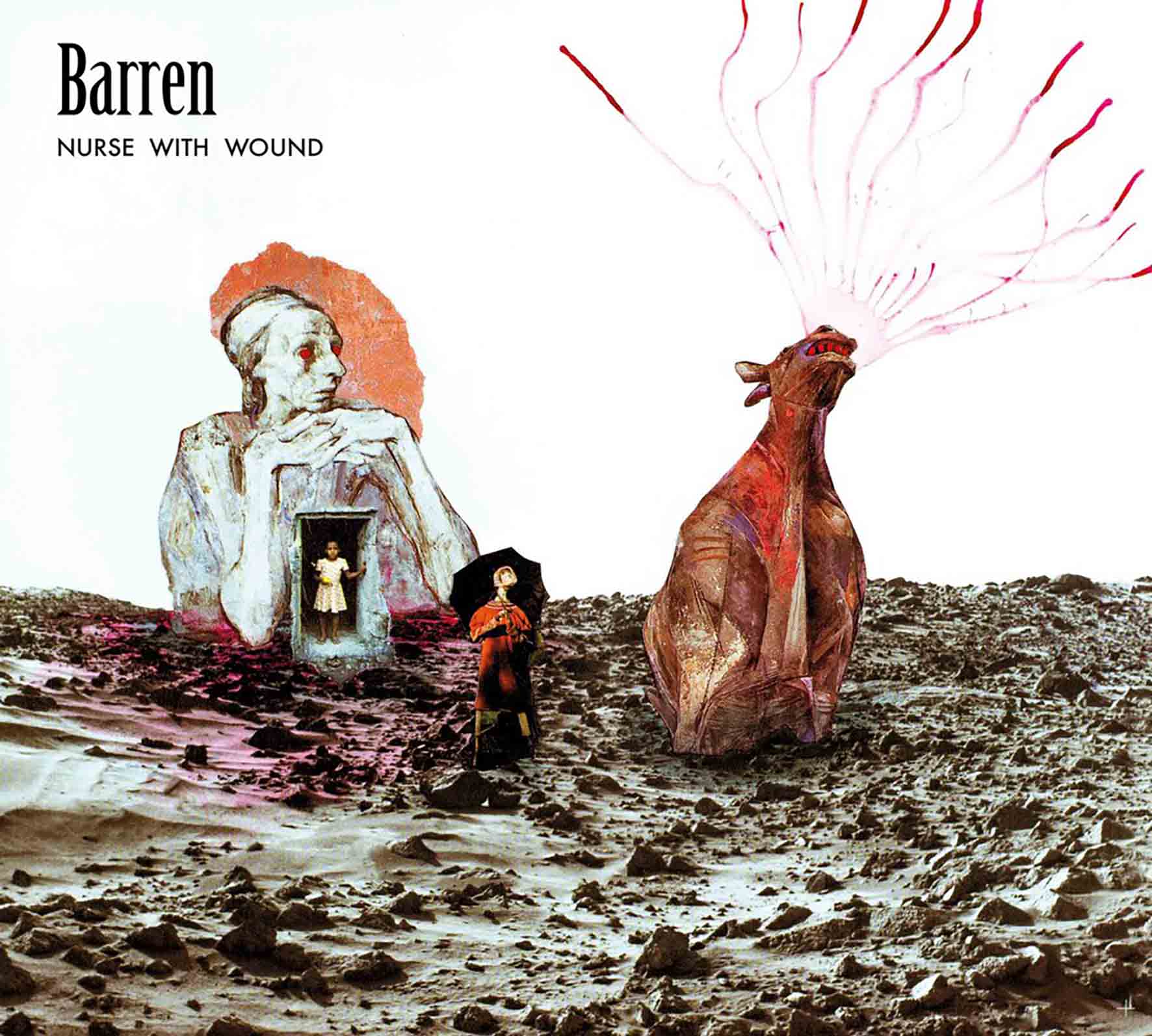 This double album had the misfortune of being released near the end of 2020, so it lamentably did not quite get the attention that it deserved (and being a live album probably did not help matters much either).  Granted, it has admittedly been a while since the NWW camp dropped an album that I would breathlessly proclaim a stone-cold masterpiece, yet the project's current era features quite a formidable lineup. In fact, most United Dairies/ICR releases in recent years have been refreshingly solid for an entity with such a vast and historically erratic discography. Barren happily continues that trend, documenting two performances from differing lineup configurations that have been deemed "amongst their most unusual performances." In this context, however, "unusual" means "very professional-sounding longform works conspicuously free of sinister whimsy." Significantly, the two performances are almost unrecognizable as NWW despite cannibalizing a pair of studio releases. They make for quite a satisfying deep-psych/spaced-out ambient release in their own right, however, as there is no rule stating that albums need to be representative to be enjoyable.
This double album had the misfortune of being released near the end of 2020, so it lamentably did not quite get the attention that it deserved (and being a live album probably did not help matters much either).  Granted, it has admittedly been a while since the NWW camp dropped an album that I would breathlessly proclaim a stone-cold masterpiece, yet the project's current era features quite a formidable lineup. In fact, most United Dairies/ICR releases in recent years have been refreshingly solid for an entity with such a vast and historically erratic discography. Barren happily continues that trend, documenting two performances from differing lineup configurations that have been deemed "amongst their most unusual performances." In this context, however, "unusual" means "very professional-sounding longform works conspicuously free of sinister whimsy." Significantly, the two performances are almost unrecognizable as NWW despite cannibalizing a pair of studio releases. They make for quite a satisfying deep-psych/spaced-out ambient release in their own right, however, as there is no rule stating that albums need to be representative to be enjoyable. This collection of (mostly) acapella field recordings from Kink Gong's Laurent Jeanneau truly emphasizes the "sublime" part of the Sublime Frequencies vision, as this is quite an eerily lovely and mesmerizing album. While the recordings span three different countries (China, Laos, and Vietnam), they are all roughly rooted in a single cultural milieu: the Chinese hill tribes known pejoratively as the Yao ("dog" or "savage"). Understandably, a large number of these tribal folk prefer the name Mien ("people"), but they are a multifarious bunch that have spread beyond China into Southeast Asia and evolved into numerous distinctive and divergent subcultures. The first half of the album is devoted to very pure and simple canon singing ("an initial melody is imitated at a specified time interval by one or more parts"), while the second half offers some compelling and more fleshed-out variations. While the "raw, ethereal, and cosmic" performances that Laurent captured need no additional enhancement to captivate me, the variations are every bit as great as the undiluted essence and give the album an impressively strong dynamic arc.
This collection of (mostly) acapella field recordings from Kink Gong's Laurent Jeanneau truly emphasizes the "sublime" part of the Sublime Frequencies vision, as this is quite an eerily lovely and mesmerizing album. While the recordings span three different countries (China, Laos, and Vietnam), they are all roughly rooted in a single cultural milieu: the Chinese hill tribes known pejoratively as the Yao ("dog" or "savage"). Understandably, a large number of these tribal folk prefer the name Mien ("people"), but they are a multifarious bunch that have spread beyond China into Southeast Asia and evolved into numerous distinctive and divergent subcultures. The first half of the album is devoted to very pure and simple canon singing ("an initial melody is imitated at a specified time interval by one or more parts"), while the second half offers some compelling and more fleshed-out variations. While the "raw, ethereal, and cosmic" performances that Laurent captured need no additional enhancement to captivate me, the variations are every bit as great as the undiluted essence and give the album an impressively strong dynamic arc.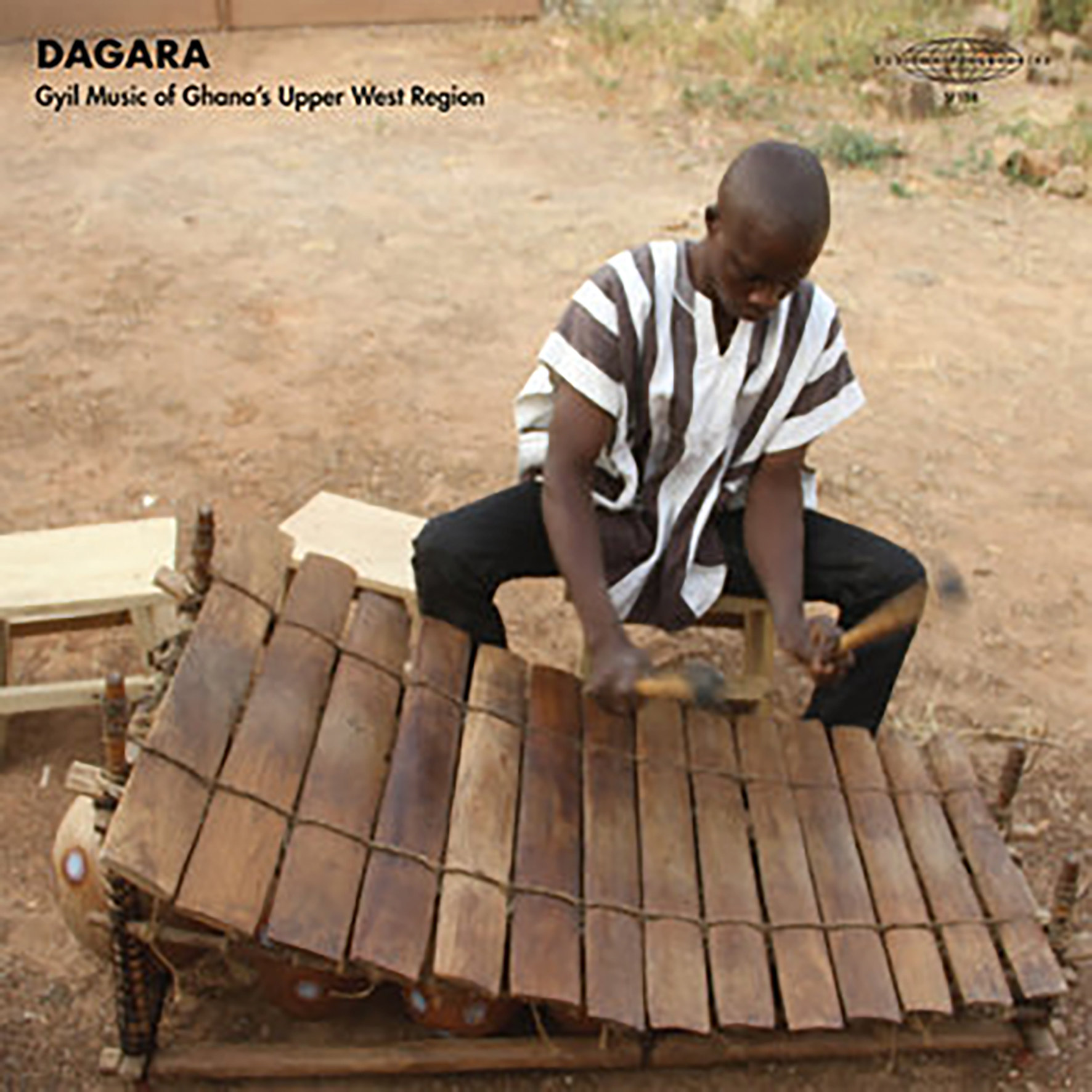 This mesmerizing and unique gem from Sublime Frequencies documents some killer field recordings made by Hisham Mayet in the Upper West region of Ghana back in 2019. I knew absolutely nothing about gyril music before hearing this album, but the most salient detail is that the primary instrument is a traditional xylophone used by the Lobi people. That does not even remotely convey how strange and wonderful these recordings are, but SF's description includes phrases like "long form trance music" and "acoustic techno," and those seem to hit the mark in spirit. To me, this album sounds like a ritualistic drum circle, but way more sophisticated, melodic, and psych-damaged than anything I would expect from actual communal percussion. As with a lot of field-recorded Sublime Frequency fare, it is very easy to dismiss this album as just an interesting window into an underheard culture from a cursory or casual listen. Once I listened to Dagara in a focused way, however, it quickly revealed itself to be something quite transcendent, as it seamlessly merges the otherness of great "experimental" music with an almost ecstatic visceral intensity.
This mesmerizing and unique gem from Sublime Frequencies documents some killer field recordings made by Hisham Mayet in the Upper West region of Ghana back in 2019. I knew absolutely nothing about gyril music before hearing this album, but the most salient detail is that the primary instrument is a traditional xylophone used by the Lobi people. That does not even remotely convey how strange and wonderful these recordings are, but SF's description includes phrases like "long form trance music" and "acoustic techno," and those seem to hit the mark in spirit. To me, this album sounds like a ritualistic drum circle, but way more sophisticated, melodic, and psych-damaged than anything I would expect from actual communal percussion. As with a lot of field-recorded Sublime Frequency fare, it is very easy to dismiss this album as just an interesting window into an underheard culture from a cursory or casual listen. Once I listened to Dagara in a focused way, however, it quickly revealed itself to be something quite transcendent, as it seamlessly merges the otherness of great "experimental" music with an almost ecstatic visceral intensity. This second album from Milan-based visual artist/electro-acoustic composer Domiziano Maselli can be a disorienting collision of disparate inspirations at times, but it is certainly an intensely visceral and compelling experience when it hits the mark. Opal's description of the album mentions that Maselli possesses an "uncanny skill to create non-conformist drama," which feels like an apt characterization. It is similarly fair to say that Maselli likely has an extreme fondness for the gloomy prime of artists like Haxan Cloak and Raime, as well as a deep appreciation for Emptyset's seismic and intense approach to sound design. Elements of all three are certainly present on Lazzaro, though Maselli proves quite adept at building upon their best bits. That said, there are also a few pieces that radically break from the influences Maselli wears on his sleeve and they are uniformly brilliant. In one case, he approximates a massive contraption of slowly whirling jagged, rusted metal blades, while elsewhere he unleashes something akin to a demonically possessed string quartet hellbent on conjuring the darkest psychedelia. For me, Lazarro is a very strong album for those two pieces alone, but his execution for everything else is quite impressive as well.
This second album from Milan-based visual artist/electro-acoustic composer Domiziano Maselli can be a disorienting collision of disparate inspirations at times, but it is certainly an intensely visceral and compelling experience when it hits the mark. Opal's description of the album mentions that Maselli possesses an "uncanny skill to create non-conformist drama," which feels like an apt characterization. It is similarly fair to say that Maselli likely has an extreme fondness for the gloomy prime of artists like Haxan Cloak and Raime, as well as a deep appreciation for Emptyset's seismic and intense approach to sound design. Elements of all three are certainly present on Lazzaro, though Maselli proves quite adept at building upon their best bits. That said, there are also a few pieces that radically break from the influences Maselli wears on his sleeve and they are uniformly brilliant. In one case, he approximates a massive contraption of slowly whirling jagged, rusted metal blades, while elsewhere he unleashes something akin to a demonically possessed string quartet hellbent on conjuring the darkest psychedelia. For me, Lazarro is a very strong album for those two pieces alone, but his execution for everything else is quite impressive as well.
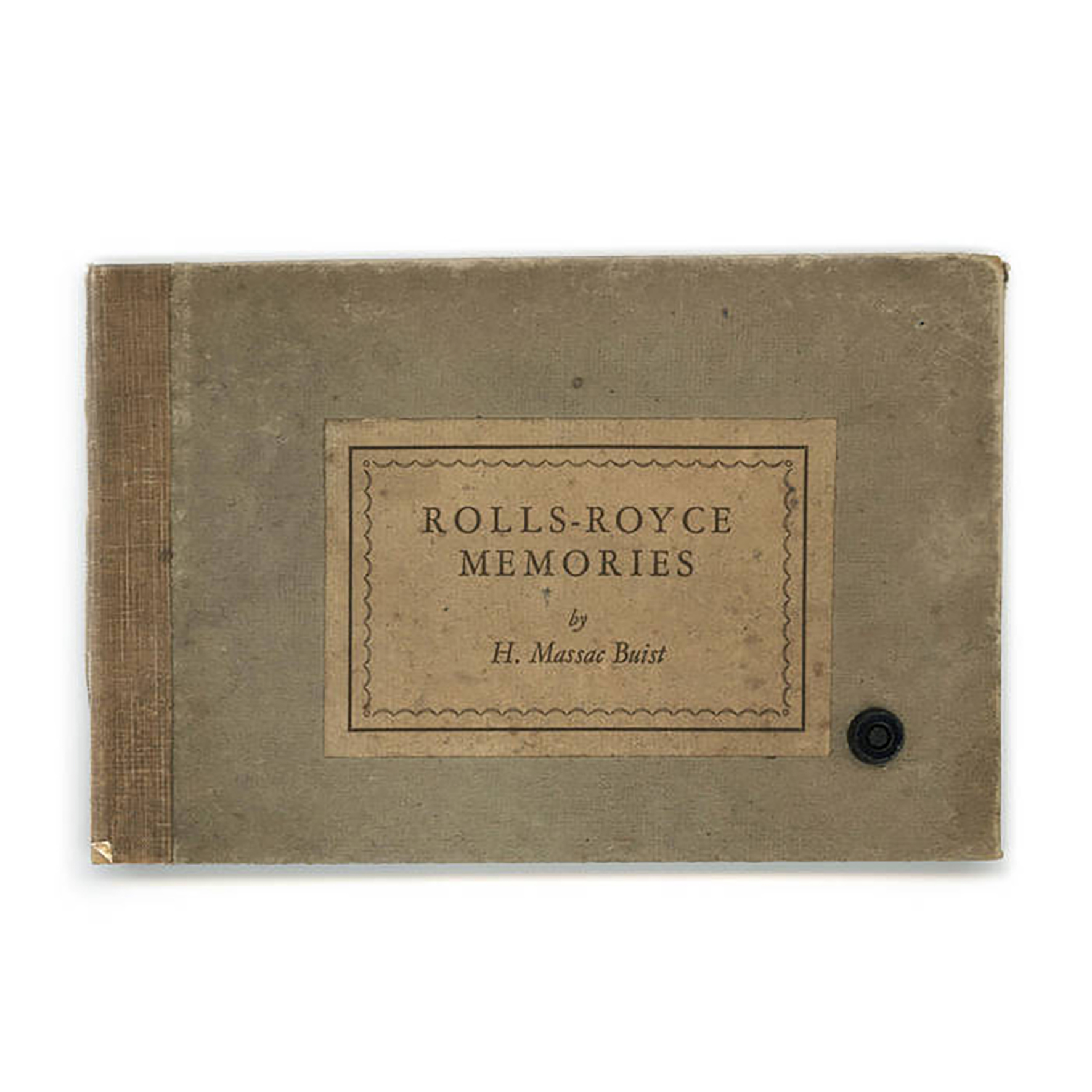 It admittedly took me a while to finally connect all the dots in my head, but it dawned on me recently that The Boats were kind of the Throbbing Gristle of a hard-to-define strain of ambient-adjacent bittersweet melancholia. My case: both Andrew Hargreaves and/or Craig Tattersall have been consistently involved in a host of varied and wonderful projects for more than two decades now (Hood, The Remote Viewer, Tape Loop Orchestra, etc.). The tape loop-focused The Humble Bee is Tattersall's most prolific and consistent endeavor; he has been releasing solo work and collaborations under that moniker since 2009. In fact, this album was the project's debut, but I only recently heard it for the first time, as its initial release was a limited CDr in a handmade case made from repurposed book covers (pictured). Last month, it got a well-deserved reissue on vinyl from the endearingly eccentric Astral Industries with VERY different cover art and it sold out instantly. That gives me hope for humanity, as this incredibly beautiful and absolutely sublime release deserves as much exposure as it can get. A Miscellany for the Quiet Hours is a stone-cold classic.
It admittedly took me a while to finally connect all the dots in my head, but it dawned on me recently that The Boats were kind of the Throbbing Gristle of a hard-to-define strain of ambient-adjacent bittersweet melancholia. My case: both Andrew Hargreaves and/or Craig Tattersall have been consistently involved in a host of varied and wonderful projects for more than two decades now (Hood, The Remote Viewer, Tape Loop Orchestra, etc.). The tape loop-focused The Humble Bee is Tattersall's most prolific and consistent endeavor; he has been releasing solo work and collaborations under that moniker since 2009. In fact, this album was the project's debut, but I only recently heard it for the first time, as its initial release was a limited CDr in a handmade case made from repurposed book covers (pictured). Last month, it got a well-deserved reissue on vinyl from the endearingly eccentric Astral Industries with VERY different cover art and it sold out instantly. That gives me hope for humanity, as this incredibly beautiful and absolutely sublime release deserves as much exposure as it can get. A Miscellany for the Quiet Hours is a stone-cold classic. Back in 2016, noise/sound art legend Joe Colley returned from a lengthy hiatus to release the solid No Way In on Jason Lescalleet's Glistening Examples, but he has been extremely quiet ever since, surfacing only to release a tape of a durational live performance last year. Happily, he is back again with another major statement and it is quite a monster. It is also unusually accessible at times, as Trance Tapes lives up to its name beautifully (though those trances inevitably curdle into nightmare territory). In some ways, this album resembles a classic noise tape on the more "industrial" side of the spectrum, as each of the four pieces is built from a foundation of relentless, obsessively repeating "machine-noise" to varying degrees. That is merely the starting point, however, as each piece rapidly blossoms into a vividly psychotropic mindbomb of viscerally buzzing frequencies and hypnotically repeating chirps, bleeps, throbs, and looping drones. I suspect many serious noise fans would roll their eyes or spit out their drink in disbelief if I had the temerity to proclaim this a career highlight, so I will refrain from doing that. However, it is extremely difficult to imagine a Joe Colley or Crawl Unit album in which he was able to realize his vision with more clarity and focus than he does with this near-perfect tour de force.
Back in 2016, noise/sound art legend Joe Colley returned from a lengthy hiatus to release the solid No Way In on Jason Lescalleet's Glistening Examples, but he has been extremely quiet ever since, surfacing only to release a tape of a durational live performance last year. Happily, he is back again with another major statement and it is quite a monster. It is also unusually accessible at times, as Trance Tapes lives up to its name beautifully (though those trances inevitably curdle into nightmare territory). In some ways, this album resembles a classic noise tape on the more "industrial" side of the spectrum, as each of the four pieces is built from a foundation of relentless, obsessively repeating "machine-noise" to varying degrees. That is merely the starting point, however, as each piece rapidly blossoms into a vividly psychotropic mindbomb of viscerally buzzing frequencies and hypnotically repeating chirps, bleeps, throbs, and looping drones. I suspect many serious noise fans would roll their eyes or spit out their drink in disbelief if I had the temerity to proclaim this a career highlight, so I will refrain from doing that. However, it is extremely difficult to imagine a Joe Colley or Crawl Unit album in which he was able to realize his vision with more clarity and focus than he does with this near-perfect tour de force.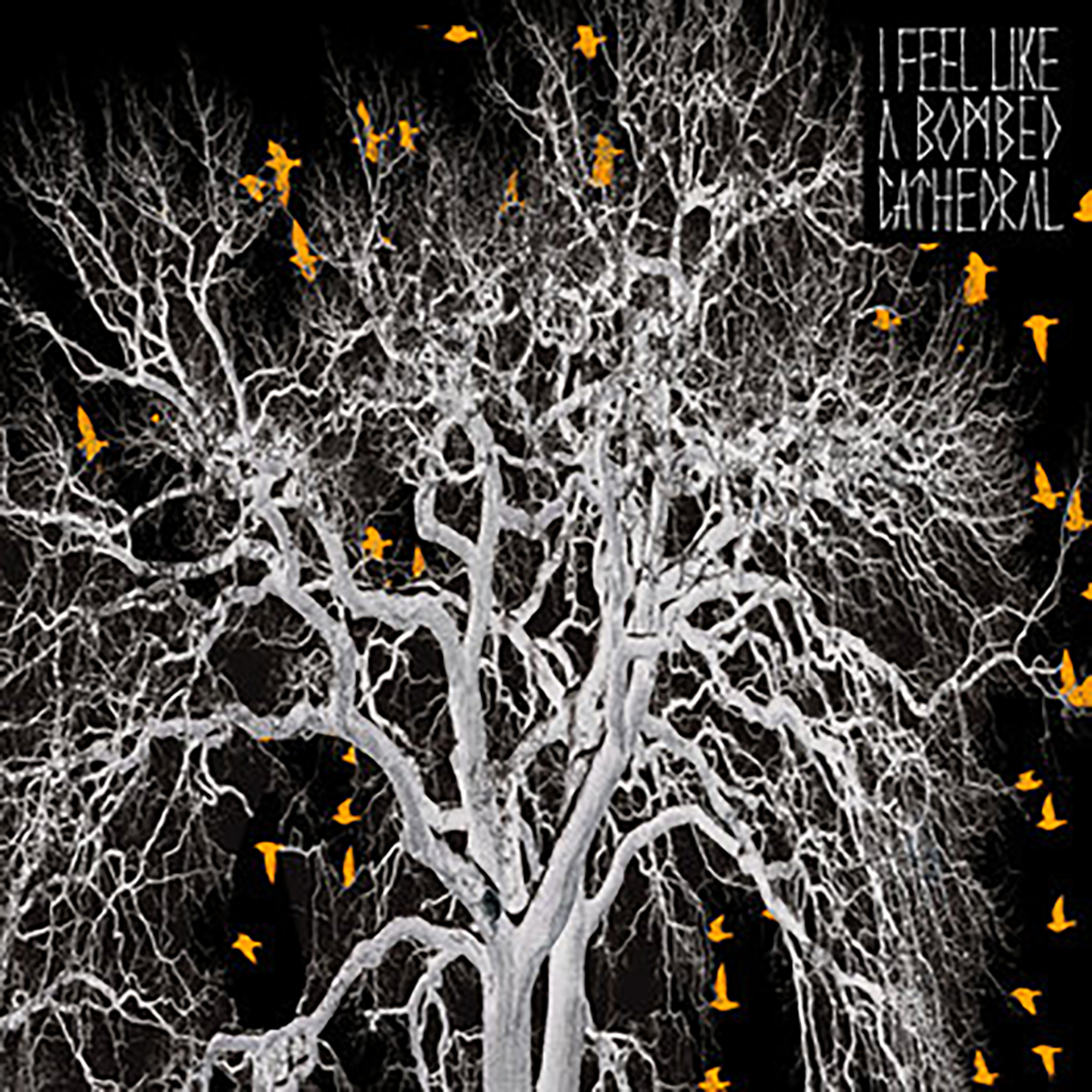 This solo drone project from Ulan Bator's Amaury Cambuzat has been one of my favorite discoveries of the last few years, as both AmOrtH and W featured moments that induced me to proclaim that Cambuzat was "a goddamn drone shaman." This latest album was a bit of a surprise, however, as Cambuzat casually made it available as a digital-only release on his Bandcamp page with just a simple description of "This is the very first recording of I Feel Like a Bombed Cathedral." Apparently, the recordings date from early 2018 and I am amazed that Cambuzat did not feel inclined to make them public until now, as a handful of these pieces are absolute gems that rank among the project’s finest work. A few of the other ones admittedly feel like a searching, partially formed vision of the greatness to come, but γένεσις is much, much better than its humble "vault clearing" origins suggest. I would not have been at all disappointed if this was a proper new Bombed Cathedral release, as the album is absolutely teaming with beautifully warped guitar sounds and immersive layers of richly textured psychedelia. In fact, γένεσις only heightens my expectations for whatever Cambuzat might be working on now, as no sane person would keep music this great on the shelf for three years unless they had something even better in the pipeline.
This solo drone project from Ulan Bator's Amaury Cambuzat has been one of my favorite discoveries of the last few years, as both AmOrtH and W featured moments that induced me to proclaim that Cambuzat was "a goddamn drone shaman." This latest album was a bit of a surprise, however, as Cambuzat casually made it available as a digital-only release on his Bandcamp page with just a simple description of "This is the very first recording of I Feel Like a Bombed Cathedral." Apparently, the recordings date from early 2018 and I am amazed that Cambuzat did not feel inclined to make them public until now, as a handful of these pieces are absolute gems that rank among the project’s finest work. A few of the other ones admittedly feel like a searching, partially formed vision of the greatness to come, but γένεσις is much, much better than its humble "vault clearing" origins suggest. I would not have been at all disappointed if this was a proper new Bombed Cathedral release, as the album is absolutely teaming with beautifully warped guitar sounds and immersive layers of richly textured psychedelia. In fact, γένεσις only heightens my expectations for whatever Cambuzat might be working on now, as no sane person would keep music this great on the shelf for three years unless they had something even better in the pipeline. This is the debut album from a Berlin-based foursome dedicated to performing the works of Malaysian-born composer/trombonist Rishin Singh. Notably, Singh is also a member of Konzert Minimal, which is a modern classical ensemble dedicated to performing compositions by the Wandelweiser collective. In a 2016 New Yorker profile of the Wandelweiser milieu, Alex Ross noted that one recurring theme in their work is a "ghost tonality never achieves stability; it will frustrate those who expect one chord to lead logically to another." Singh's own vision shares a lot of similar stylistic terrain, as A Fog Like Liars Loving is nothing if not ghostly (and creepy (and unsettling)). It resembles an alternate universe version of Low in which they were a chamber music ensemble that listened to a steady diet of nothing but Jandek, Scott Walker, Marble Index-era Nico, and warped old folk records played at the wrong speed. That said, Singh definitely has an unusually sophisticated sensibility regarding dissonant harmonies and the entire album has an eerily nocturnal, dread-soaked, and somnambulant feel that is uniquely Leider's own. Purportedly, the album also features an "understated gallows humor," which is also an achievement of sorts, as Singh has managed to cultivate a strain of black humor so bleak that even I often have a hard time detecting it.
This is the debut album from a Berlin-based foursome dedicated to performing the works of Malaysian-born composer/trombonist Rishin Singh. Notably, Singh is also a member of Konzert Minimal, which is a modern classical ensemble dedicated to performing compositions by the Wandelweiser collective. In a 2016 New Yorker profile of the Wandelweiser milieu, Alex Ross noted that one recurring theme in their work is a "ghost tonality never achieves stability; it will frustrate those who expect one chord to lead logically to another." Singh's own vision shares a lot of similar stylistic terrain, as A Fog Like Liars Loving is nothing if not ghostly (and creepy (and unsettling)). It resembles an alternate universe version of Low in which they were a chamber music ensemble that listened to a steady diet of nothing but Jandek, Scott Walker, Marble Index-era Nico, and warped old folk records played at the wrong speed. That said, Singh definitely has an unusually sophisticated sensibility regarding dissonant harmonies and the entire album has an eerily nocturnal, dread-soaked, and somnambulant feel that is uniquely Leider's own. Purportedly, the album also features an "understated gallows humor," which is also an achievement of sorts, as Singh has managed to cultivate a strain of black humor so bleak that even I often have a hard time detecting it. This latest release from Scott Morgan’s long-running loscil project is a bit of a conceptual detour from his usual fare, as the entire album was "sourced from a single three-minute composition performed by a 22-piece string orchestra in Budapest." That is not all, however, as that brave composition's unconventional journey also included an intermediate stage in which it was "lathe-cut on to a 7-inch, then 'scratched and abused to add texture and color.'" Despite those unusual origins, Clara still sounds exactly like a loscil album, as Morgan is nothing if not consistent. In this case, that basically translates as "a slow-motion dub techno album lurking behind a grayscale ambient fog," but the magic lies in the execution (as always) and Morgan has never been a slouch in that regard. In fact, he succeeds on two fronts with this release, as Clara is both another fine loscil album and an impressive feat of inventive de-/ re-construction, as Morgan managed to transform three minutes of music into a varied, absorbing, and dynamically satisfying album-length statement (and he made it all seem effortless and natural to boot).
This latest release from Scott Morgan’s long-running loscil project is a bit of a conceptual detour from his usual fare, as the entire album was "sourced from a single three-minute composition performed by a 22-piece string orchestra in Budapest." That is not all, however, as that brave composition's unconventional journey also included an intermediate stage in which it was "lathe-cut on to a 7-inch, then 'scratched and abused to add texture and color.'" Despite those unusual origins, Clara still sounds exactly like a loscil album, as Morgan is nothing if not consistent. In this case, that basically translates as "a slow-motion dub techno album lurking behind a grayscale ambient fog," but the magic lies in the execution (as always) and Morgan has never been a slouch in that regard. In fact, he succeeds on two fronts with this release, as Clara is both another fine loscil album and an impressive feat of inventive de-/ re-construction, as Morgan managed to transform three minutes of music into a varied, absorbing, and dynamically satisfying album-length statement (and he made it all seem effortless and natural to boot). I was a bit surprised to see this album getting the "10-year-anniversary deluxe vinyl reissue" treatment, as I did not remember it making a particularly big splash when it was first issued on Illegal Art back in 2011. Then again, I would be hard-pressed to think of any album in the "plunderphonics" milieu that has made a big splash in the last two decades, as existing in a legal gray area in a litigious world is not exactly optimal for promoting records. In any case, I missed this album the first time around because I mistakenly thought that I was already reasonably familiar with Vicki Bennett's work and found it charming, fun, and clever, but not quite something that destined to deeply move me or blow my mind. As it turns out, I was very wrong about that, as this album reaches some truly dazzling and remarkably poignant heights. While I do regret that I could have spent the last decade regularly enjoying this magnum opus, Welcome Abroad actually feels like a perfect album to experience for the first time in 2021, as it was recorded while Bennett found herself unexpectedly stranded in the US due to the Iceland volcano's impact on air travel. Consequently, Bennett was preoccupied with themes of "displacement" and "a longing for elsewhere," which are themes that feel especially universal and powerful in light of the last couple years. And, of course, there is no one better at transforming recontextualized fragments of pop culture ephemera into a life-affirming phantasia of mischievous joie de vivre than Vicki Bennett.
I was a bit surprised to see this album getting the "10-year-anniversary deluxe vinyl reissue" treatment, as I did not remember it making a particularly big splash when it was first issued on Illegal Art back in 2011. Then again, I would be hard-pressed to think of any album in the "plunderphonics" milieu that has made a big splash in the last two decades, as existing in a legal gray area in a litigious world is not exactly optimal for promoting records. In any case, I missed this album the first time around because I mistakenly thought that I was already reasonably familiar with Vicki Bennett's work and found it charming, fun, and clever, but not quite something that destined to deeply move me or blow my mind. As it turns out, I was very wrong about that, as this album reaches some truly dazzling and remarkably poignant heights. While I do regret that I could have spent the last decade regularly enjoying this magnum opus, Welcome Abroad actually feels like a perfect album to experience for the first time in 2021, as it was recorded while Bennett found herself unexpectedly stranded in the US due to the Iceland volcano's impact on air travel. Consequently, Bennett was preoccupied with themes of "displacement" and "a longing for elsewhere," which are themes that feel especially universal and powerful in light of the last couple years. And, of course, there is no one better at transforming recontextualized fragments of pop culture ephemera into a life-affirming phantasia of mischievous joie de vivre than Vicki Bennett.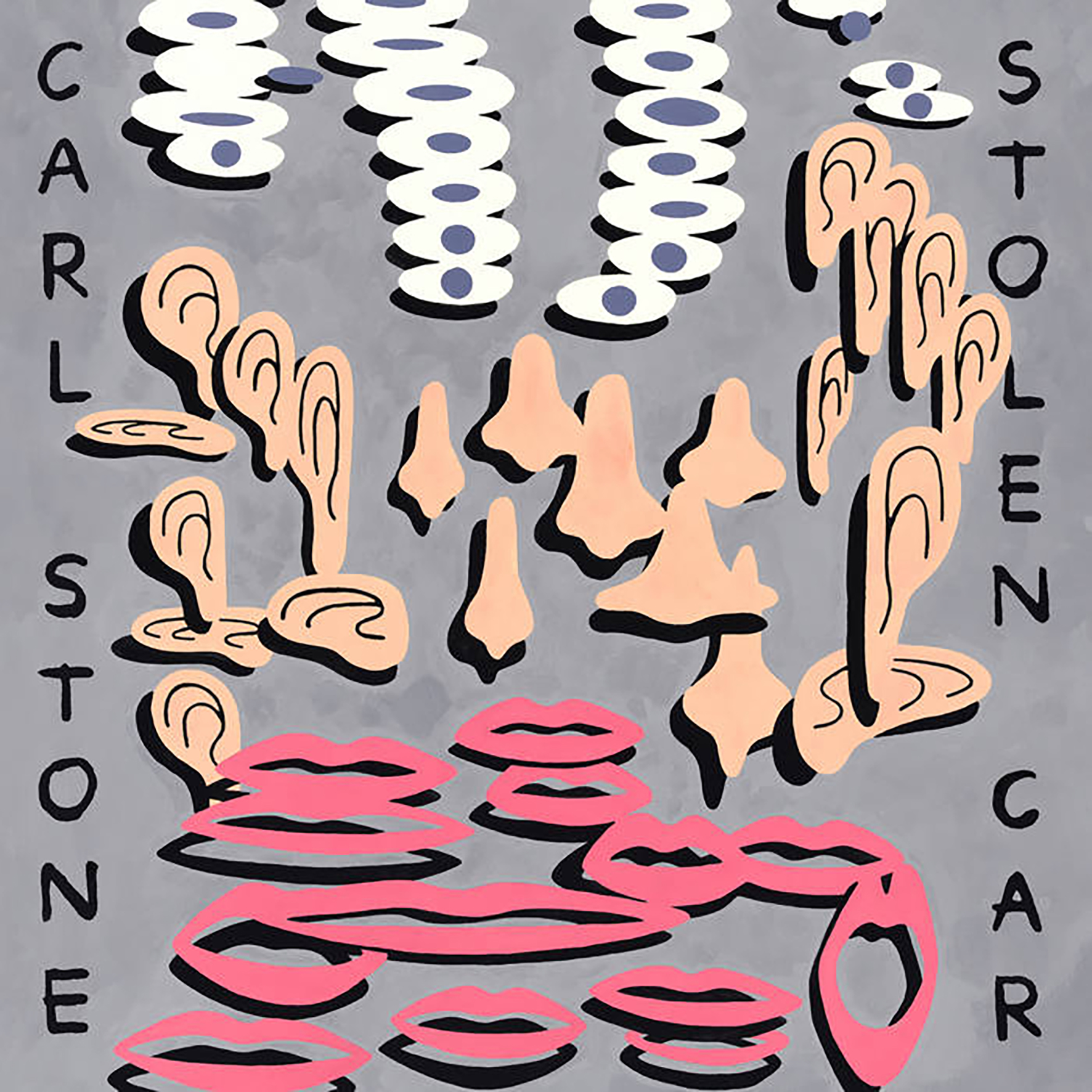 In theory, this album was released last September (which feels like a hundred years ago), but the LP only recently made its way into stores and distros, which is an increasingly familiar story these days. Fortunately, that long delay inspired me to revisit the album with fresh ears and I discovered that I actually liked it quite a lot more than I remembered. That statement deserves an asterisk though, as my earlier issue with Stolen Car was merely that I had already played the amazing Au Jus/The Jugged Hare and Ganci & Figli singles to death and those are probably the four best songs here. That unsurprisingly made the actual album a bit of an anticlimax, as my expectations were absolutely sky high and only those singles could meet them. Had I not already been extremely familiar with those four pieces, however, I suspect Stolen Car's release would have inspired me to run out into the street to grab random strangers by the shoulders and demand to know why they were just going about their mundane lives when they could be listening to this delirious, rapturous swirl of kaleidoscopic pop brilliance instead. On the bright side, not doing that may have spared me a night in jail, so I guess it all ultimately worked out. Admittedly, I still think this is a bit of an uneven album, but it is at least half of a masterpiece too, as I am hard-pressed to think of many people who can touch Carl Stone at the height of his powers (which he is frequently at here).
In theory, this album was released last September (which feels like a hundred years ago), but the LP only recently made its way into stores and distros, which is an increasingly familiar story these days. Fortunately, that long delay inspired me to revisit the album with fresh ears and I discovered that I actually liked it quite a lot more than I remembered. That statement deserves an asterisk though, as my earlier issue with Stolen Car was merely that I had already played the amazing Au Jus/The Jugged Hare and Ganci & Figli singles to death and those are probably the four best songs here. That unsurprisingly made the actual album a bit of an anticlimax, as my expectations were absolutely sky high and only those singles could meet them. Had I not already been extremely familiar with those four pieces, however, I suspect Stolen Car's release would have inspired me to run out into the street to grab random strangers by the shoulders and demand to know why they were just going about their mundane lives when they could be listening to this delirious, rapturous swirl of kaleidoscopic pop brilliance instead. On the bright side, not doing that may have spared me a night in jail, so I guess it all ultimately worked out. Admittedly, I still think this is a bit of an uneven album, but it is at least half of a masterpiece too, as I am hard-pressed to think of many people who can touch Carl Stone at the height of his powers (which he is frequently at here). I have been aware of Daniel Bachman's work for quite some time, as he has always been one of the more reliably excellent and virtuosic artists in the post-Fahey "American Primitive" milieu, but I was apparently not paying nearly enough attention to notice how far he had evolved beyond that scene in recent years. I believe Bachman first started to conspicuously head in this more psych-minded and abstract direction with 2016's self-titled release, so I suppose I have some catching up to do, yet Axacan is the album that is currently being hailed as a masterpiece so it seemed like a good place to start. Amusingly, I think it might actually drift too far from Bachman's instrumental prowess to land in my own personal pantheon of masterworks, but it is certainly one hell of a bold, surprising, and radical release. To my ears, it resembles some kind of impressionistic and hallucinatory "found footage" diary of unsettling sound collages far more than it does a guitar album. In fact, Axacan so vividly evokes disjointed, elliptical, and poetic scenes from the aftermath of an apocalypse that it calls to mind a classic George Romero zombie film as reimagined by Terrence Mallick.
I have been aware of Daniel Bachman's work for quite some time, as he has always been one of the more reliably excellent and virtuosic artists in the post-Fahey "American Primitive" milieu, but I was apparently not paying nearly enough attention to notice how far he had evolved beyond that scene in recent years. I believe Bachman first started to conspicuously head in this more psych-minded and abstract direction with 2016's self-titled release, so I suppose I have some catching up to do, yet Axacan is the album that is currently being hailed as a masterpiece so it seemed like a good place to start. Amusingly, I think it might actually drift too far from Bachman's instrumental prowess to land in my own personal pantheon of masterworks, but it is certainly one hell of a bold, surprising, and radical release. To my ears, it resembles some kind of impressionistic and hallucinatory "found footage" diary of unsettling sound collages far more than it does a guitar album. In fact, Axacan so vividly evokes disjointed, elliptical, and poetic scenes from the aftermath of an apocalypse that it calls to mind a classic George Romero zombie film as reimagined by Terrence Mallick. It has been nearly four years since the last Colleen album, which is certainly not the first lengthy gap in Cécile Schott's wonderful discography, but she definitely seemed to be thriving and experiencing a creative renaissance since signing to Thrill Jockey. As it turns out, that hiatus was far from intentional, as Schott has been plagued by quite an impressive run of personal misfortunes and upheavals since A Flame My Love, A Frequency was released (some of which certainly inform the album's searching lyrical themes). While I do not subscribe to the "suffering inspires great art" myth, I do think the long break between albums allowed Schott enough time, solitude, and introspection to make The Tunnel and the Clearing far more of a leap forward than it may have been otherwise. It does share its predecessor's conspicuous lack of viola de gamba though, as Schott remains committed to exploring the potential of just a simple synthesizer and a few well-chosen pedals. That similarity aside, this latest opus sounds completely different than any other Colleen album, as it feels like Schott just invented her own incredibly cool strain of organ-driven hypnagogic pop (and one fitfully enlivened by delightful Latin rhythms, no less). In fact, I briefly wondered if she had somehow managed to customize a synthesizer to be played with a bow. This is unsurprisingly yet another excellent Colleen album.
It has been nearly four years since the last Colleen album, which is certainly not the first lengthy gap in Cécile Schott's wonderful discography, but she definitely seemed to be thriving and experiencing a creative renaissance since signing to Thrill Jockey. As it turns out, that hiatus was far from intentional, as Schott has been plagued by quite an impressive run of personal misfortunes and upheavals since A Flame My Love, A Frequency was released (some of which certainly inform the album's searching lyrical themes). While I do not subscribe to the "suffering inspires great art" myth, I do think the long break between albums allowed Schott enough time, solitude, and introspection to make The Tunnel and the Clearing far more of a leap forward than it may have been otherwise. It does share its predecessor's conspicuous lack of viola de gamba though, as Schott remains committed to exploring the potential of just a simple synthesizer and a few well-chosen pedals. That similarity aside, this latest opus sounds completely different than any other Colleen album, as it feels like Schott just invented her own incredibly cool strain of organ-driven hypnagogic pop (and one fitfully enlivened by delightful Latin rhythms, no less). In fact, I briefly wondered if she had somehow managed to customize a synthesizer to be played with a bow. This is unsurprisingly yet another excellent Colleen album. Saltern’s latest Yoshi Wada reissue unhappily coincides with the composer's unexpected passing, but at least he managed to live long enough to see his work get some wider appreciation in recent years. Or at least managed to see some of his major albums finally get remastered and released outside Japan, as "wider appreciation" is very relative when one's vision is as unapologetically challenging as Wada's. In fact, I always viewed him as a Final Boss in the appreciation of difficult and adventurous music, as it takes a lot of immersion in dissonant and outré sounds before one reaches the "I crave a deep dive into avant-garde bagpipes" stage. In fact, I am not sure I am yet there myself. Given that, The Appointed Cloud is probably more for devout connoisseurs of sound art's more prickly fringes than, say, the heavy drone of Wada's 2009 triple LP Earth Horns With Electronic Drone. However, this album was one of Wada's personal favorites, as it documents the "memorable" opening performance of his "first large-scale, interactive installation" at the Great Hall of the New York Hall of Science in 1987 (which featured "spaceships hanging from the ceiling so people felt like they were traveling in outer space"). That certainly seems like a suitably disorienting environment for sounds this fascinating and unique. I dearly wish someone had thought to film some post-concert audience reactions, as I bet they were quite something.
Saltern’s latest Yoshi Wada reissue unhappily coincides with the composer's unexpected passing, but at least he managed to live long enough to see his work get some wider appreciation in recent years. Or at least managed to see some of his major albums finally get remastered and released outside Japan, as "wider appreciation" is very relative when one's vision is as unapologetically challenging as Wada's. In fact, I always viewed him as a Final Boss in the appreciation of difficult and adventurous music, as it takes a lot of immersion in dissonant and outré sounds before one reaches the "I crave a deep dive into avant-garde bagpipes" stage. In fact, I am not sure I am yet there myself. Given that, The Appointed Cloud is probably more for devout connoisseurs of sound art's more prickly fringes than, say, the heavy drone of Wada's 2009 triple LP Earth Horns With Electronic Drone. However, this album was one of Wada's personal favorites, as it documents the "memorable" opening performance of his "first large-scale, interactive installation" at the Great Hall of the New York Hall of Science in 1987 (which featured "spaceships hanging from the ceiling so people felt like they were traveling in outer space"). That certainly seems like a suitably disorienting environment for sounds this fascinating and unique. I dearly wish someone had thought to film some post-concert audience reactions, as I bet they were quite something.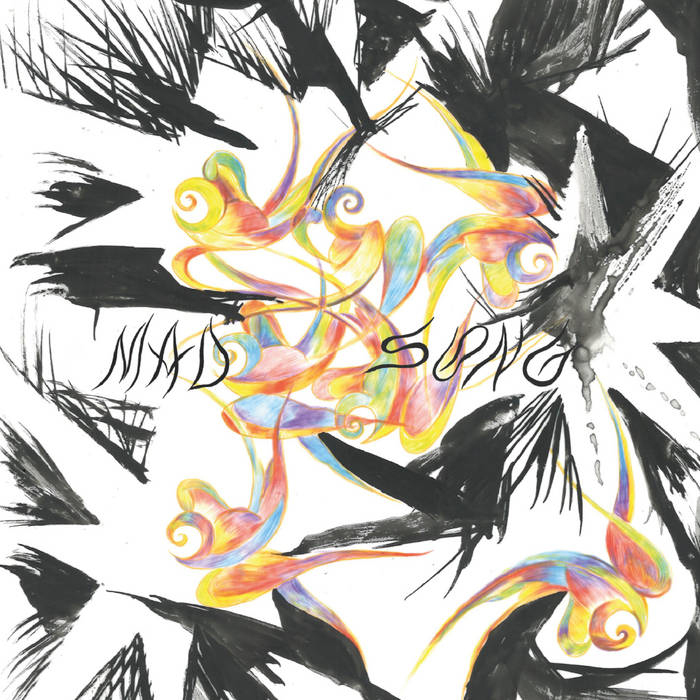 People often grumble about how music used to be better and that usually just means that they are either looking in the wrong places or not paying close enough attention, but every now and then I get blindsided by something from decades past that makes me concede that there is indeed some truth to that stance. I mention that because Louise Landes Levi is one of the few remaining artists from the late '60s Mills College/NYC avant-garde golden age who is both active and seemingly still in her creative prime. Admittedly, her discography was quite sparse until the last decade or so (much like that of Catherine Christer Hennix), but the woefully delayed appreciation of Levi's work feels like it was less due to sexism and a challenging vision than because documenting her art seems like trying to capture lightning in a bottle. Fortunately, Sloow Tapes' Bart De Paepe was up for the challenge and Bombay Lunatic Asylum is a recently formed trio that brings out some of Levi's best work. In practical terms, that mostly means that De Paepe and Koen Vandenhoudt just hung back, made some drones, and (presumably) watched in awe as Levi unleashed an passionate and fiery sarangi tour de force that calls to mind a Zen Paginini. This album is amazing.
People often grumble about how music used to be better and that usually just means that they are either looking in the wrong places or not paying close enough attention, but every now and then I get blindsided by something from decades past that makes me concede that there is indeed some truth to that stance. I mention that because Louise Landes Levi is one of the few remaining artists from the late '60s Mills College/NYC avant-garde golden age who is both active and seemingly still in her creative prime. Admittedly, her discography was quite sparse until the last decade or so (much like that of Catherine Christer Hennix), but the woefully delayed appreciation of Levi's work feels like it was less due to sexism and a challenging vision than because documenting her art seems like trying to capture lightning in a bottle. Fortunately, Sloow Tapes' Bart De Paepe was up for the challenge and Bombay Lunatic Asylum is a recently formed trio that brings out some of Levi's best work. In practical terms, that mostly means that De Paepe and Koen Vandenhoudt just hung back, made some drones, and (presumably) watched in awe as Levi unleashed an passionate and fiery sarangi tour de force that calls to mind a Zen Paginini. This album is amazing.
